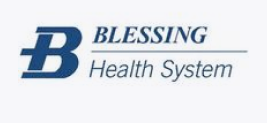April 28, 2022
Consumer-Driven Healthcare: The Importance of Consumer Segmentation Part 2

We have written several articles on the importance of Consumer segmentation for Healthcare. It is a standard practice for marketers in most industries – but healthcare has been slow to embrace this exercise. However, with the healthcare industry becomes more focused on learning how to better cater to consumer needs, hospitals are beginning to realize that they need to have a better understanding of the people that are, or could be, using the health system. The practice of consumer segmentation isn’t only crucial for marketing – it is also imperative in understanding what your patients are looking for when it comes to developing, shutting down, or investing more into different service lines.
There are many ways to approach segmentation. The most obvious is by looking at demographic factors like age, gender, age, race, and so forth, and while this would be a relatively easy task to undertake, it will not provide the necessary level of understanding about how and why consumers select, use, and evaluate health care services.
Different organizations have provided different segmentation groups. One example that we have seen, The U.S. Health Care Market: A Strategic View of Consumer Segmentation. Another, outlined below, is a psychographic segmentation model used by PatientBond
- Self Achievers are the most proactive when it comes to their wellness, investing what is necessary for their health and appearance. They stay on top of health issues with regular medical check-ups, screenings, and research. Motivated by goals and achievement, Self Achievers will tackle a challenge if they are given progress measures.
- Balance Seekers are generally proactive in their health and are wellness-oriented. They are open to many ideas, sources of information and treatment options when it comes to their healthcare. Balance Seekers themselves – not healthcare professionals – define what success looks like in their health. Having choices is very important for these types.
- Priority Jugglers are very busy with many responsibilities. Because of these commitments, they may invest in their own wellbeing and are reactive when it comes to their own, personal health issues. However, Priority Jugglers are very proactive when it comes to their family’s health and will make sure their loved ones receive the care they need.
- Direction Takers believe their physician is the most credible resource for their healthcare needs. They look to healthcare professionals for direction and guidance because of their credentials. However, Direction Takers may not always follow advice, not because they disagree, but because they have trouble incorporating them into their daily routine.
- Willful Endurers live in the “here and now” and believe there are more important things to focus on than their health. They are not necessarily unhealthy, but they do what they like, when they like, and have a difficult time changing habits. They are self-reliant and can withstand anything life throws at them, going to the doctor only when they must.
Regardless of the selection or the names that you give each segment, the underlying methodology should be to look at the “psycho-graphic” dimensions of your patients – their priorities, attitudes, and values and not just segment based upon their demographics.
Once the segmentation is complete, you will have a better understanding of your patient’s different needs and what they might be looking for in a healthcare provider. You can then use this information to identify gaps within your existing service offerings and customize your service lines to better relate to each patient segment and will place you in a better position against both your traditional and emerging competitors.











